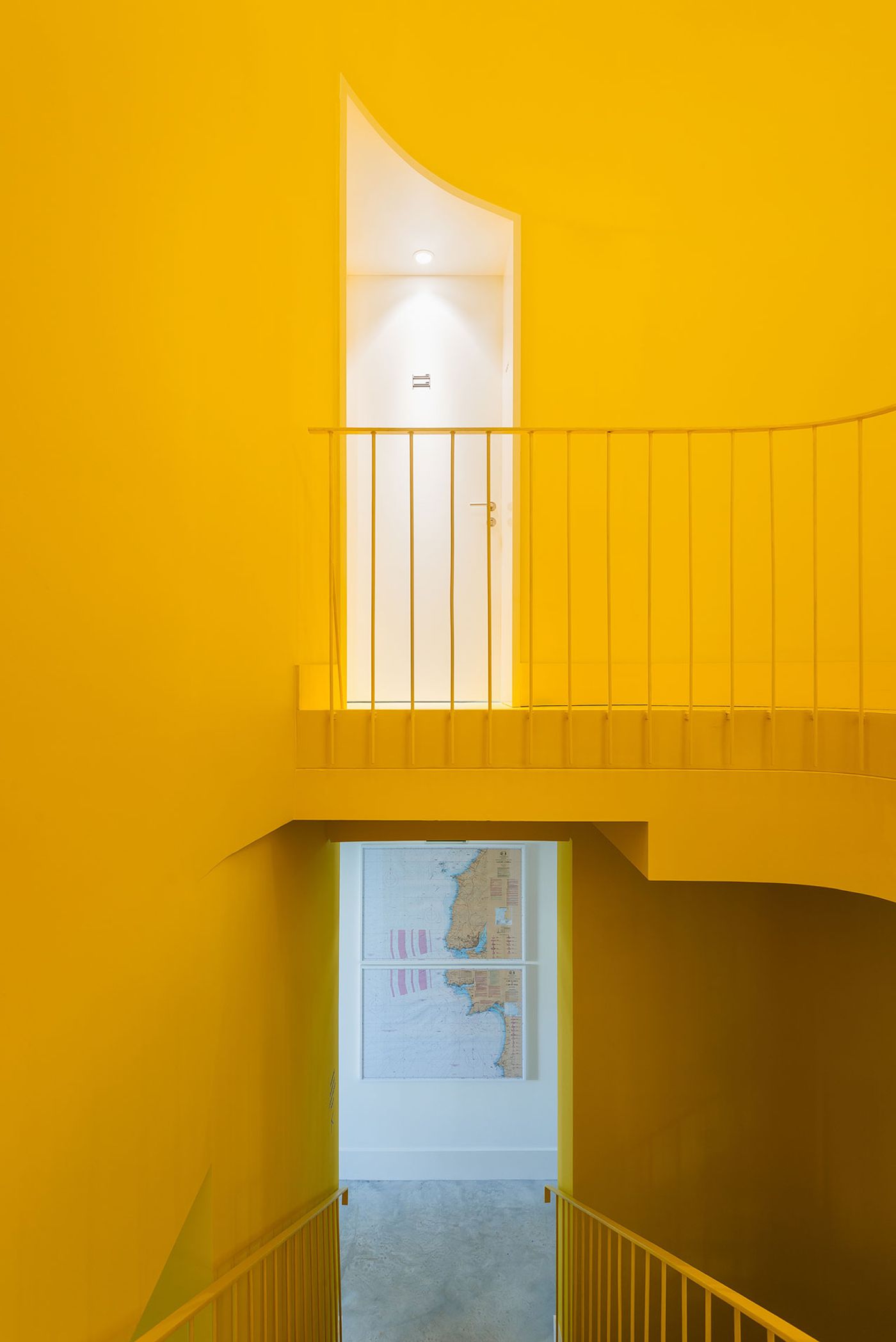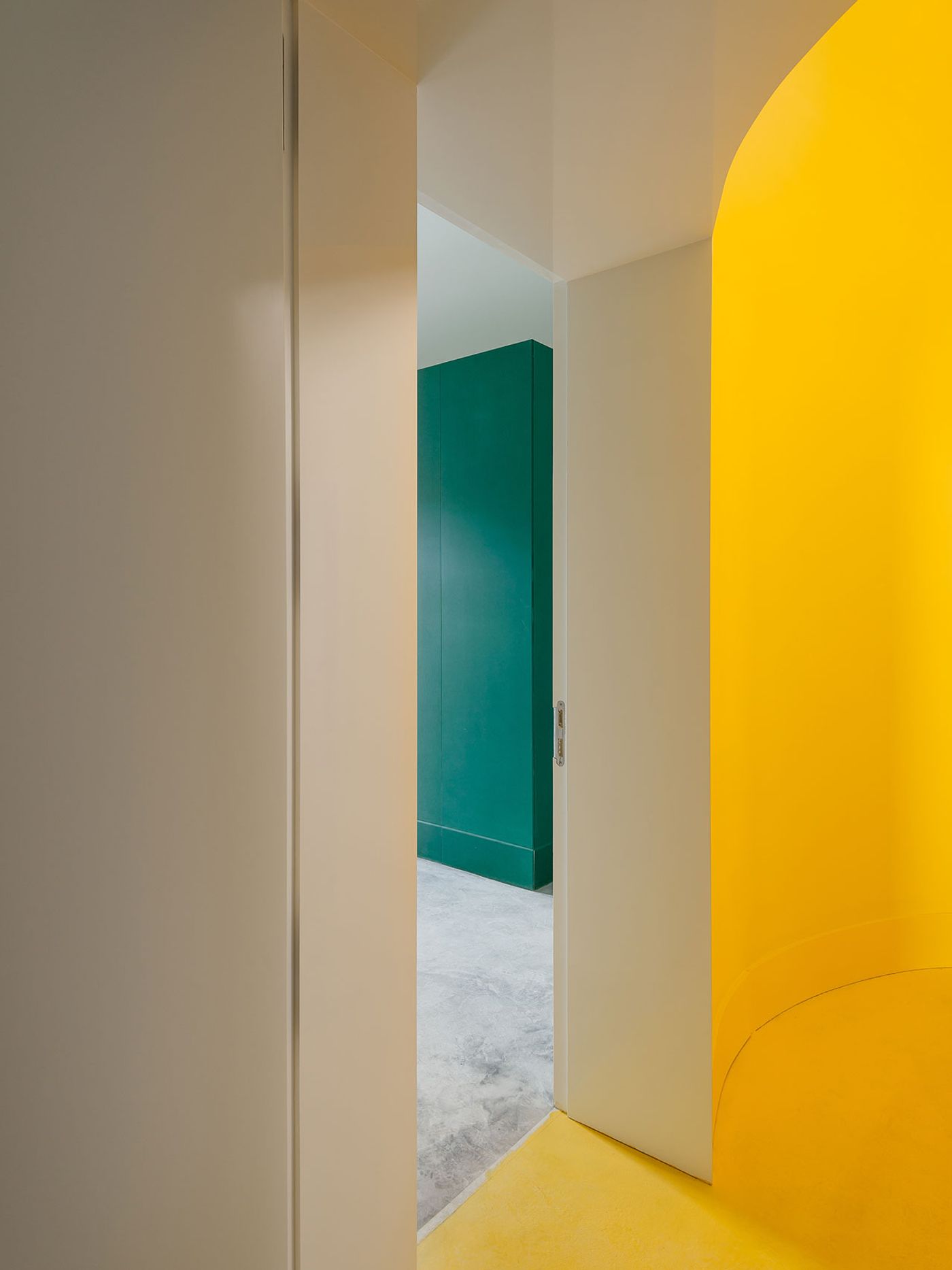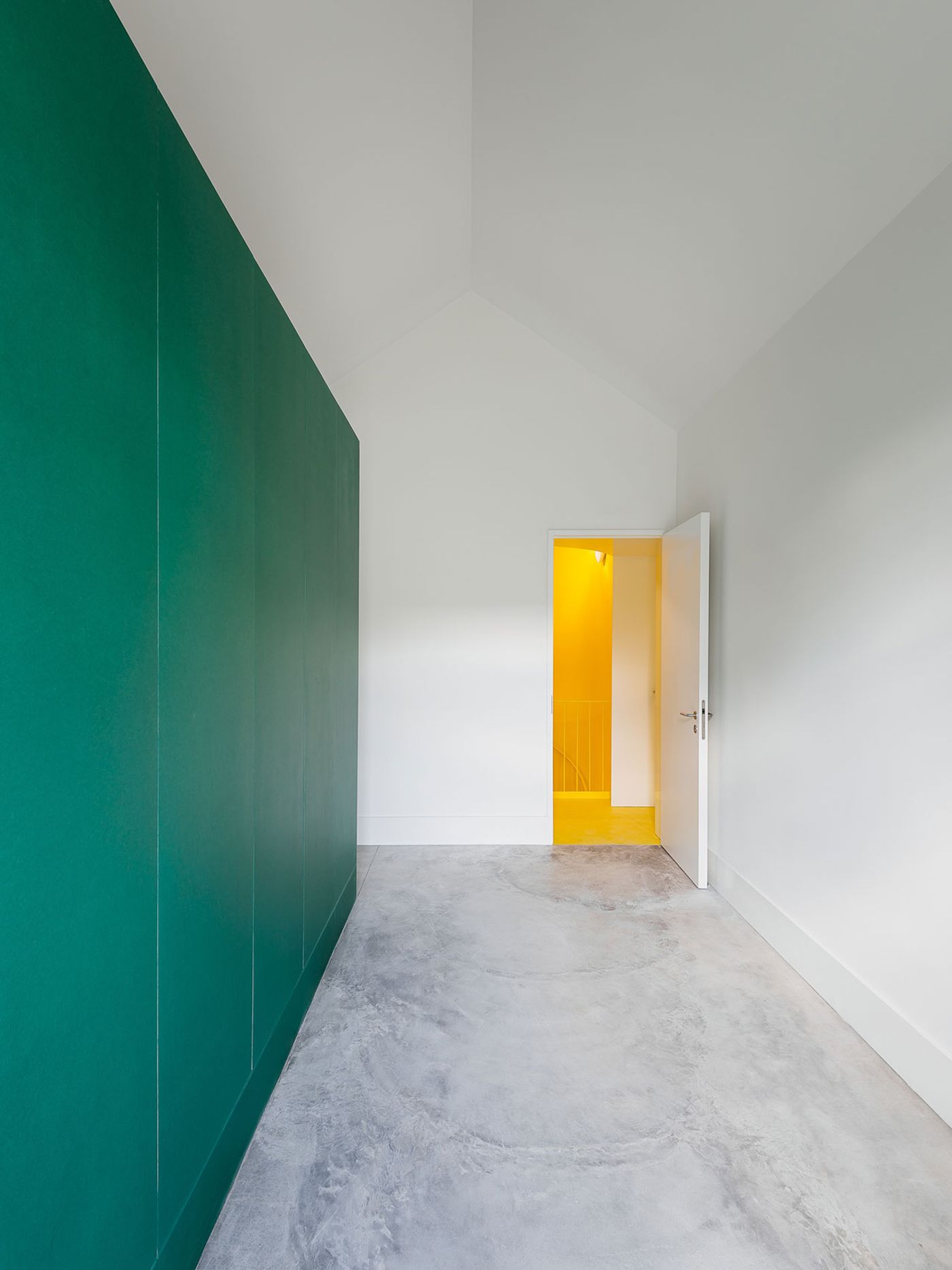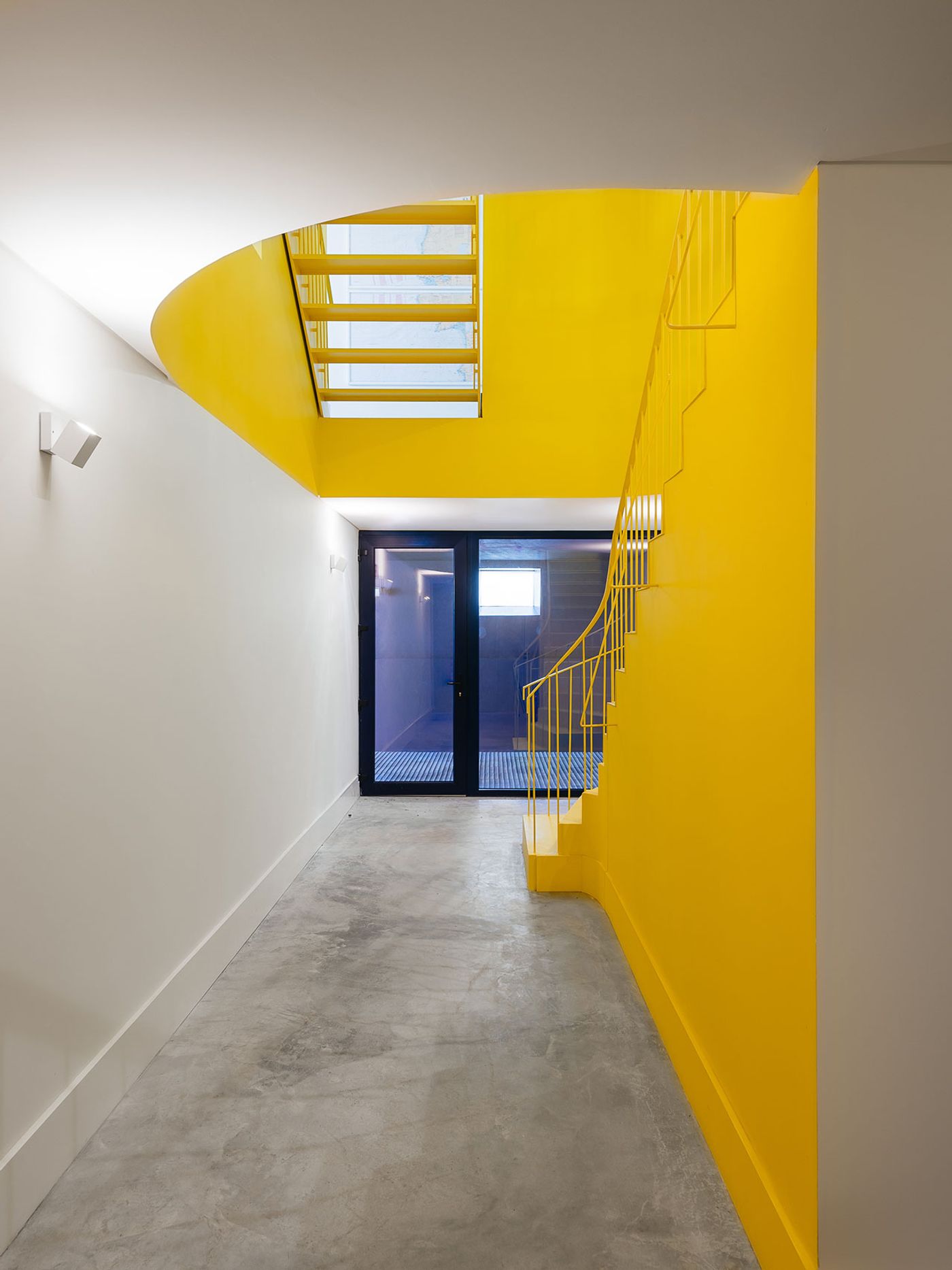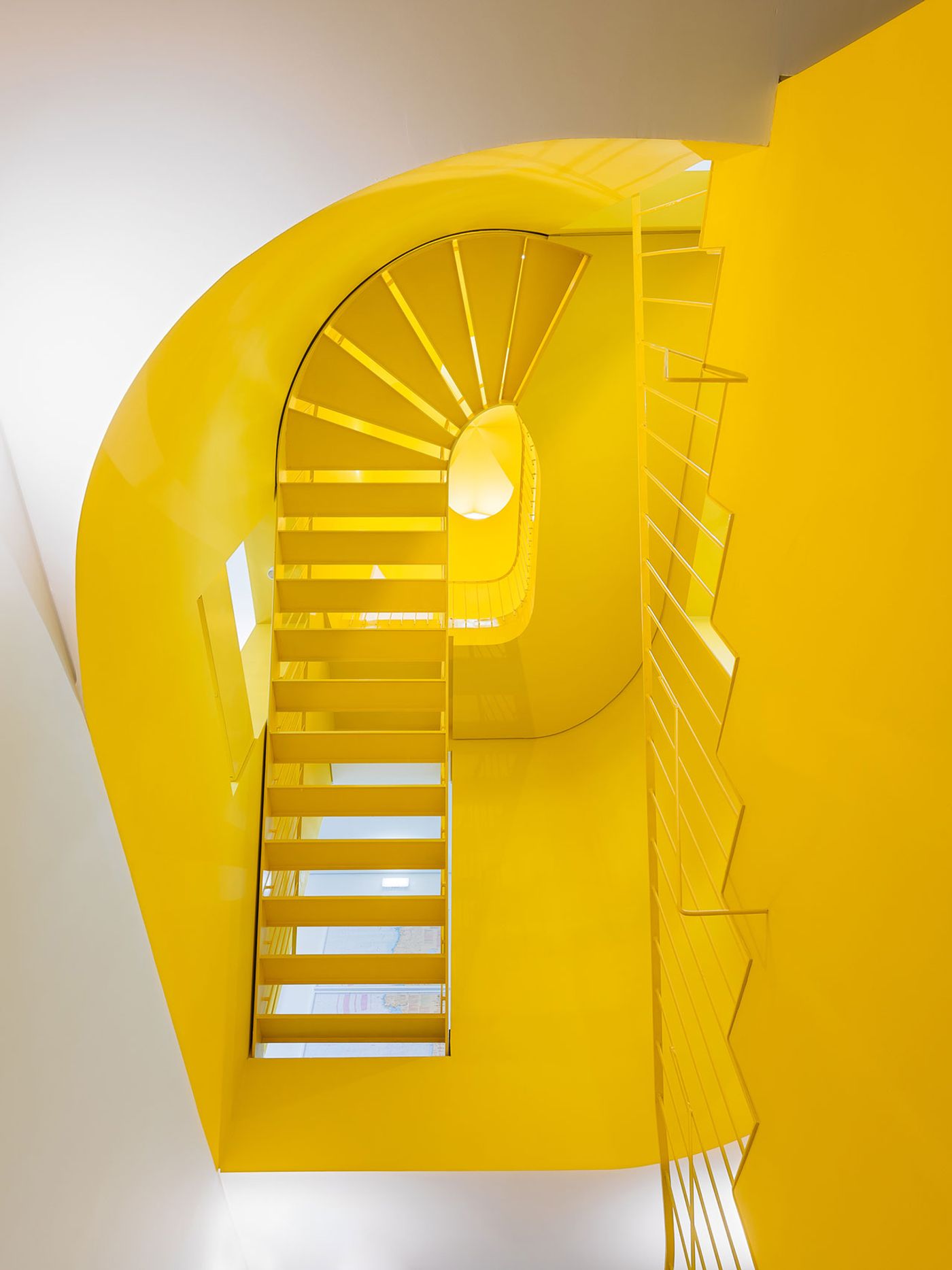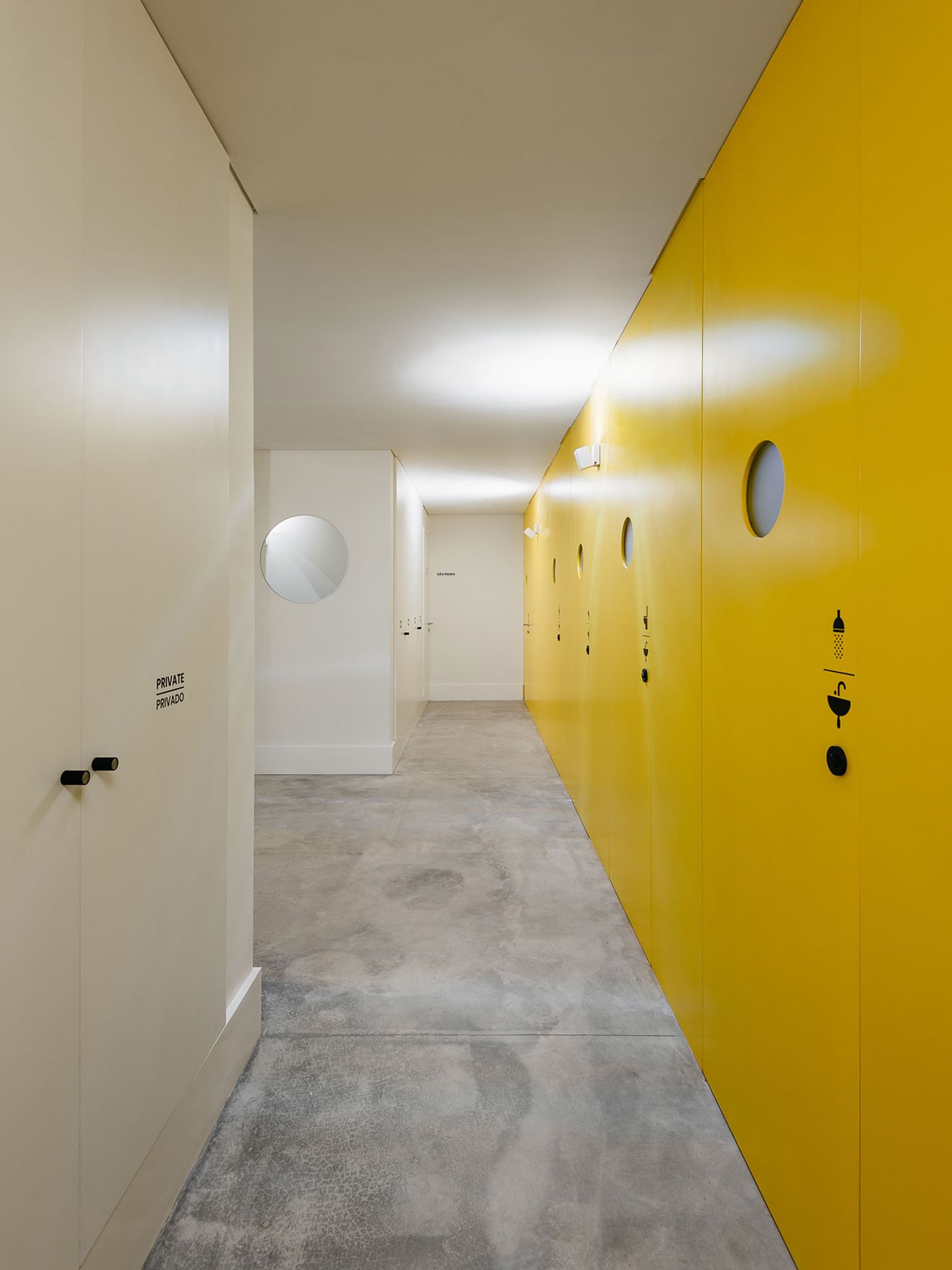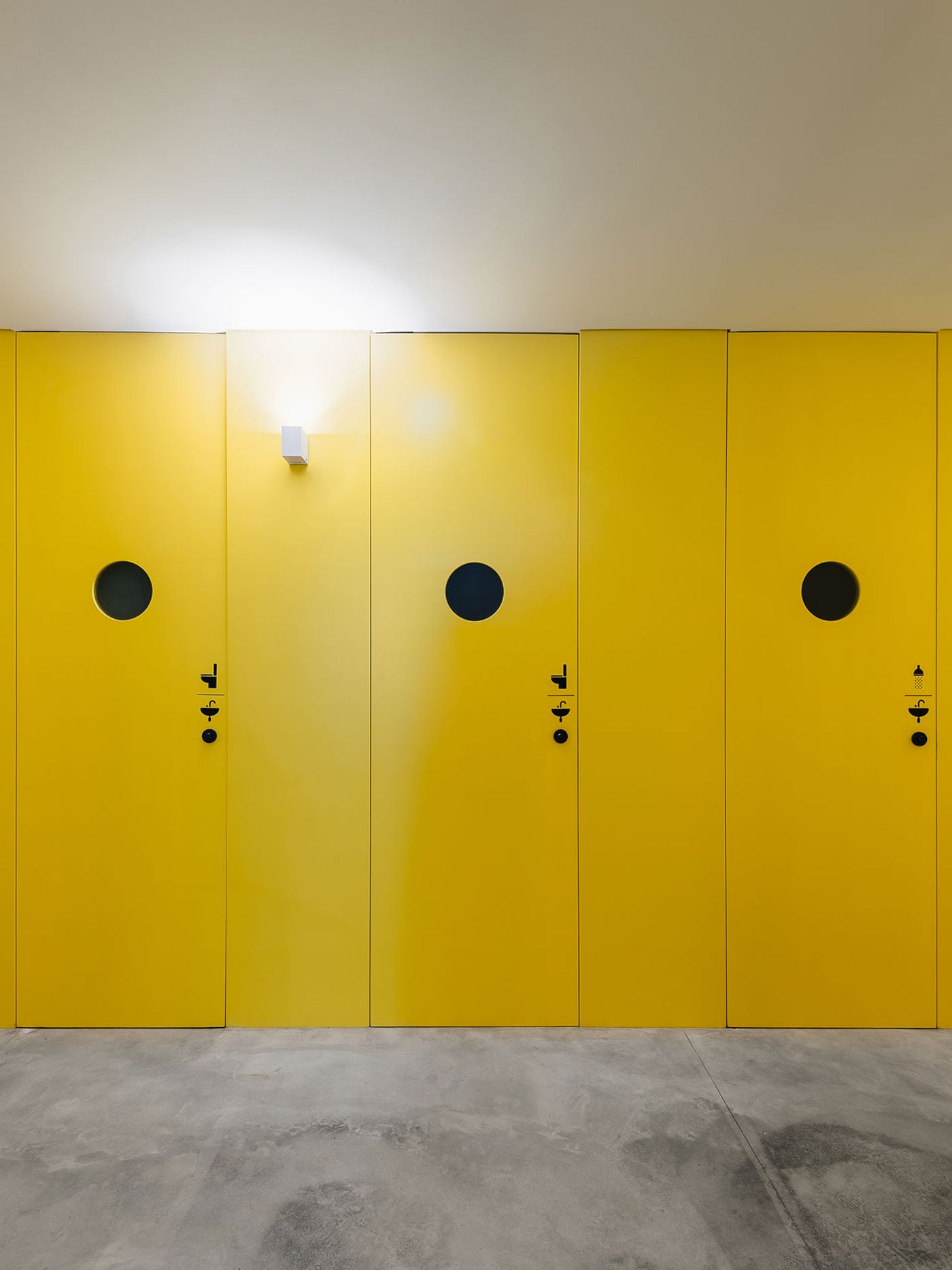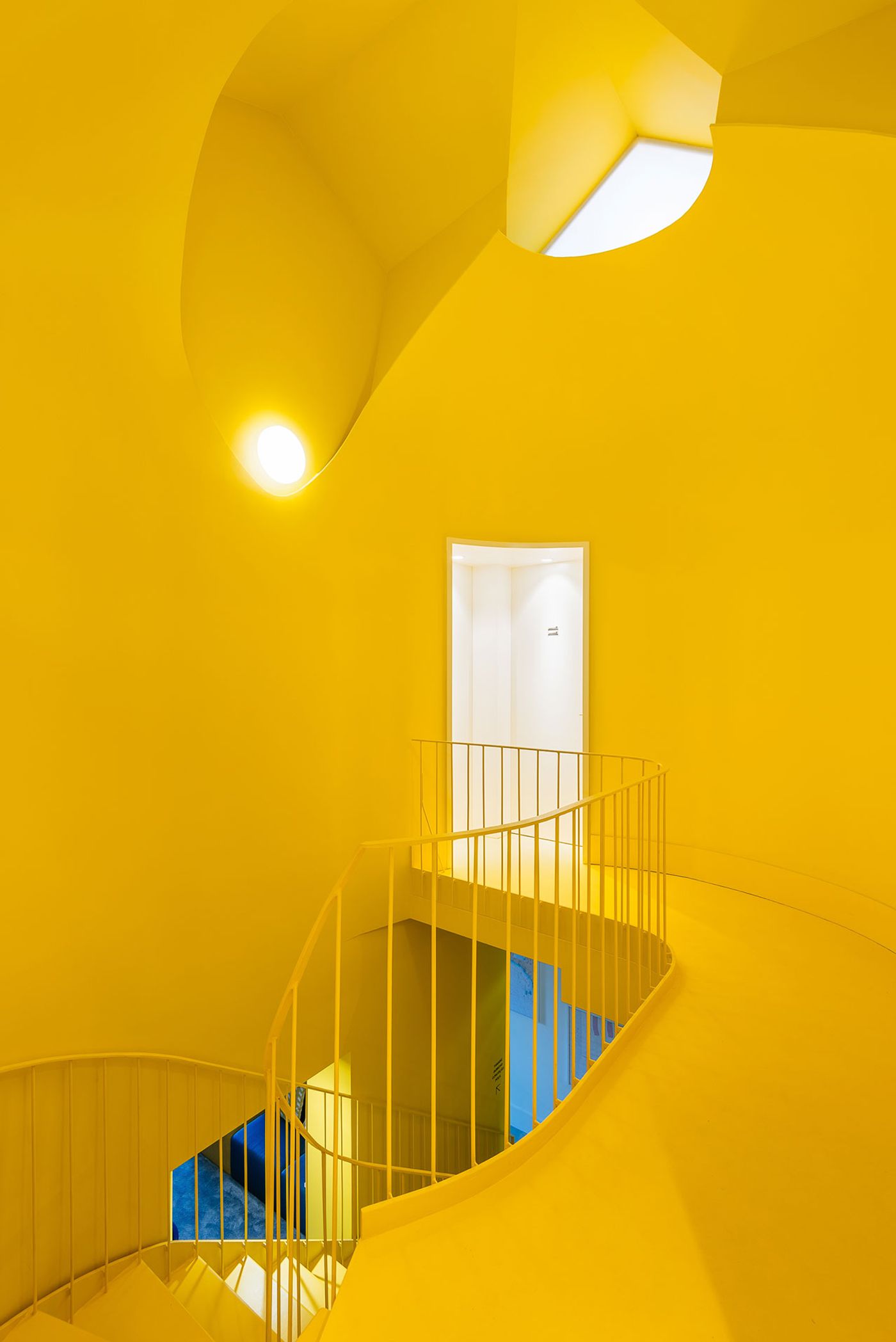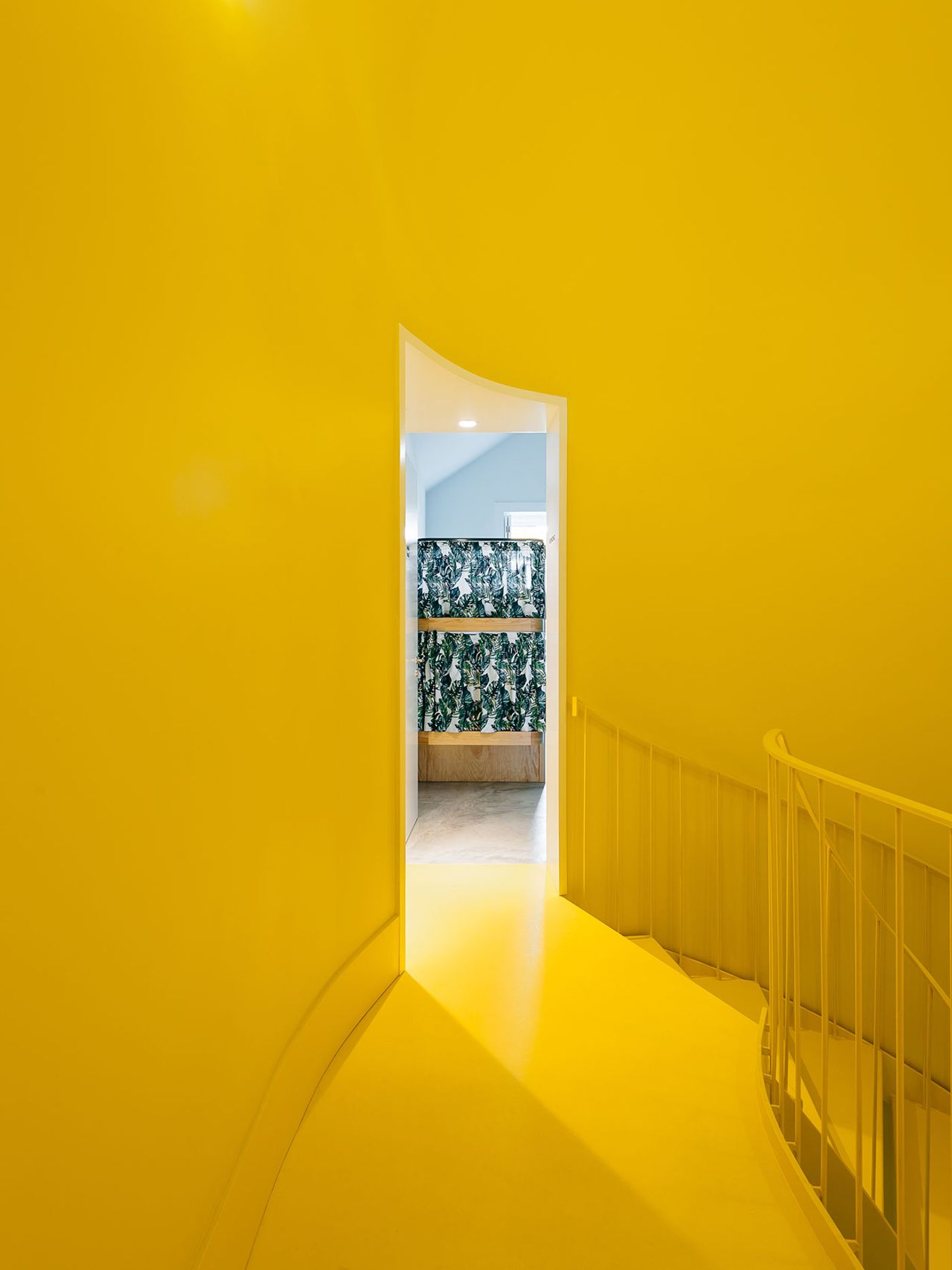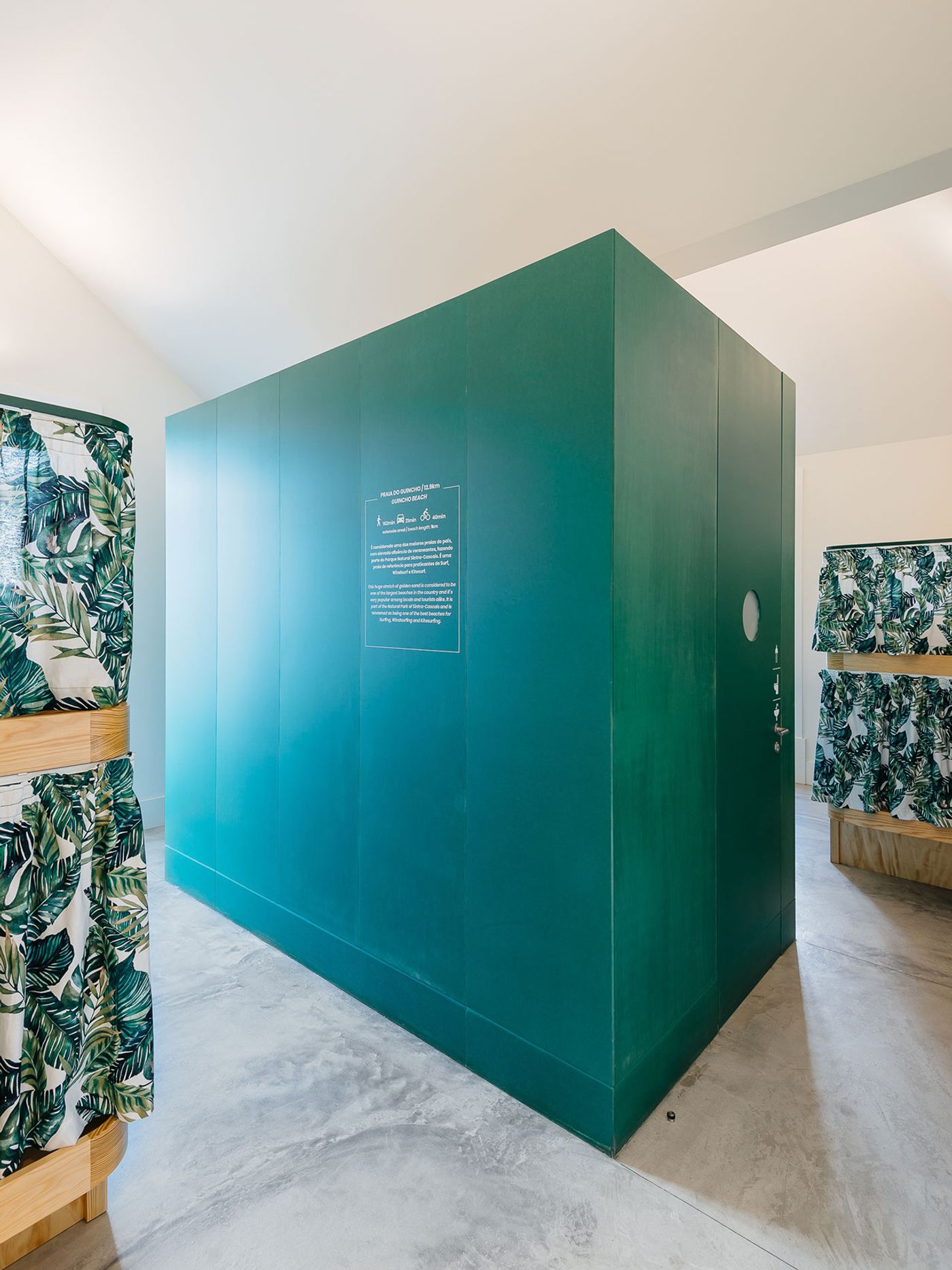
The Color-Splashed Minimalism of "Hostel in Parede"
Words by Yatzer
Location
Cascais, Portugal
Cascais, Portugal
Location
Located in Cascais, a coastal suburb of Lisbon, Portugal, that combines the historic aura of a royal retreat with the cosmopolitan vibe of a beachfront resort, “Hostel in Parade” occupies a century-old villa that Lisbon-based studio Aurora Arquitectos have renovated in reflection of the town’s hybrid nature. Whereas the exterior of the building has been meticulously restored to its former grandeur, the interior has been radically transformed with minimalist flair and contemporary exuberance in order to house the hostel’s facilities.
Designated as a royal summer retreat in the late 19th century due to its scenic beaches and proximity to Lisbon, Cascais attracted the Portuguese nobility who built ornate villas, grand mansions and garden residences to spend their summers, turning the picturesque fishing village into an oasis of glamour and luxury that has since grown into a modern tourist destination without losing its old-time charm. So when Aurora Arquitectos were commissioned to transform a historic, derelict two-storey house into a hostel that could easily be turned into a family house, they approached the project with a hybrid sensibility aiming both to restore the building’s stately past and create a contemporary venue that steadfastly looks to the future.

Photo © do mal o menos.

Photo © do mal o menos.

Photo © do mal o menos.

Photo © do mal o menos.
Although externally the building’s façades have been meticulously refurbished to their original charm, inside, a brand new spatial composition has been adopted to cater for the hostel’s functional requirements as well as accommodate a new structural design that the dilapidated state of the building demanded. The interior layout is governed by a three-by-three grid at the centre of which is a vertical core that contains a staircase connecting the basement level to the ground and first floors as well as incorporating all the building’s vertical services. Internally painted a vivid yellow, glimpses of which can be caught by various openings and doors on all three levels, the stairwell injects the all-white interiors with a subtle playfulness while the skylights on top allow daylight to further enhance its exuberant glow.
Most of the ground floor is taken up by the hostel’s public spaces that include a reception, a communal kitchen, a dining room and a shared living room. Partitioned by light-weight latticed structures and a free-standing cabinet unit, the spaces can be easily reconfigured in the future should the building be transformed into a family house. The same logic also applies to the configuration of the first floor which has been divided into four bedrooms, each one containing a free-standing block that houses a bathroom. Painted green, the bathroom blocks can be conveniently removed to create larger bedrooms. Three more bunk bed-filled bedrooms can be found in the hostel, two on the basement level, serviced by a row of bathrooms and lavatories in between, and a larger one on the ground floor.

Photo © do mal o menos.

Photo © do mal o menos.
On the back of the building, a paved patio provides an outdoor lounge space, where guests can relax under the shade of two tall trees that dominate the space. The patio is connected to the front yard through an underground passage that cuts through the building. Painted blue, the tunnel-like passage, which also serves a parking space, provides access to the basement level where visitors entering the building are greeted by the yellow staircase, a joyous awakening after the cool blue of the passageway.
On the ground floor, the vivacious blue hue is cheerfully picked up by several interior features such as storage cabinets, stools and window niches, which along with splashes of yellow, courtesy of the central stairwell and certain furniture pieces, delectably enrich the neutral interior palette of white walls and the cement screed floor. Blue dashes are also present on the exterior in the form of doorways, window frames and steps, while the yellow core glows through the windows, bestowing upon the historic building a sophisticated cheekiness that underlies its new use.

Photo © do mal o menos.

Photo © do mal o menos.

Photo © do mal o menos.

Photo © do mal o menos.

Photo © do mal o menos.

Photo © do mal o menos.

Photo © do mal o menos.

Photo © do mal o menos.

Photo © do mal o menos.

Photo © do mal o menos.

Photo © do mal o menos.

Photo © do mal o menos.

Photo © do mal o menos.

Photo © do mal o menos.
